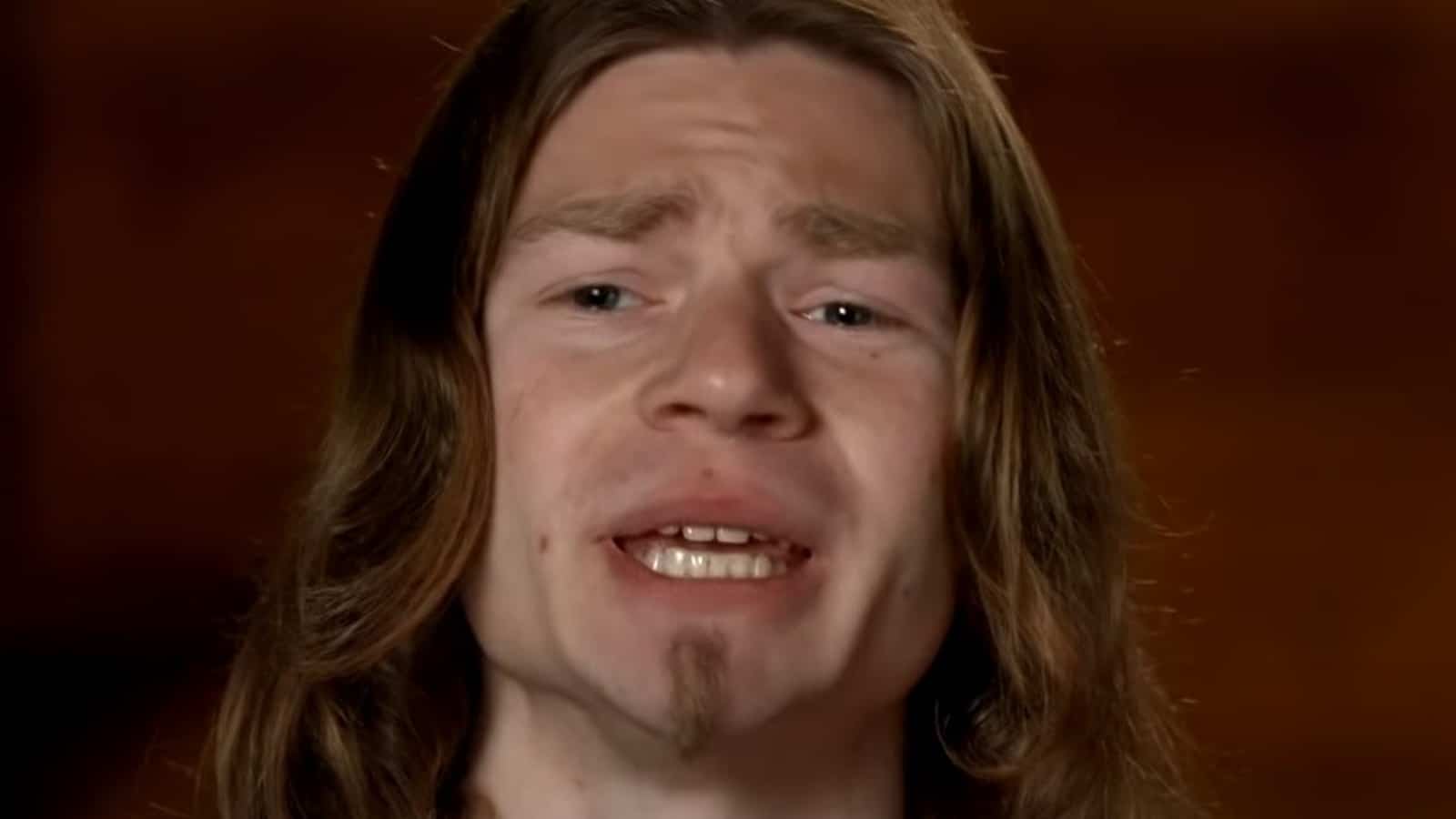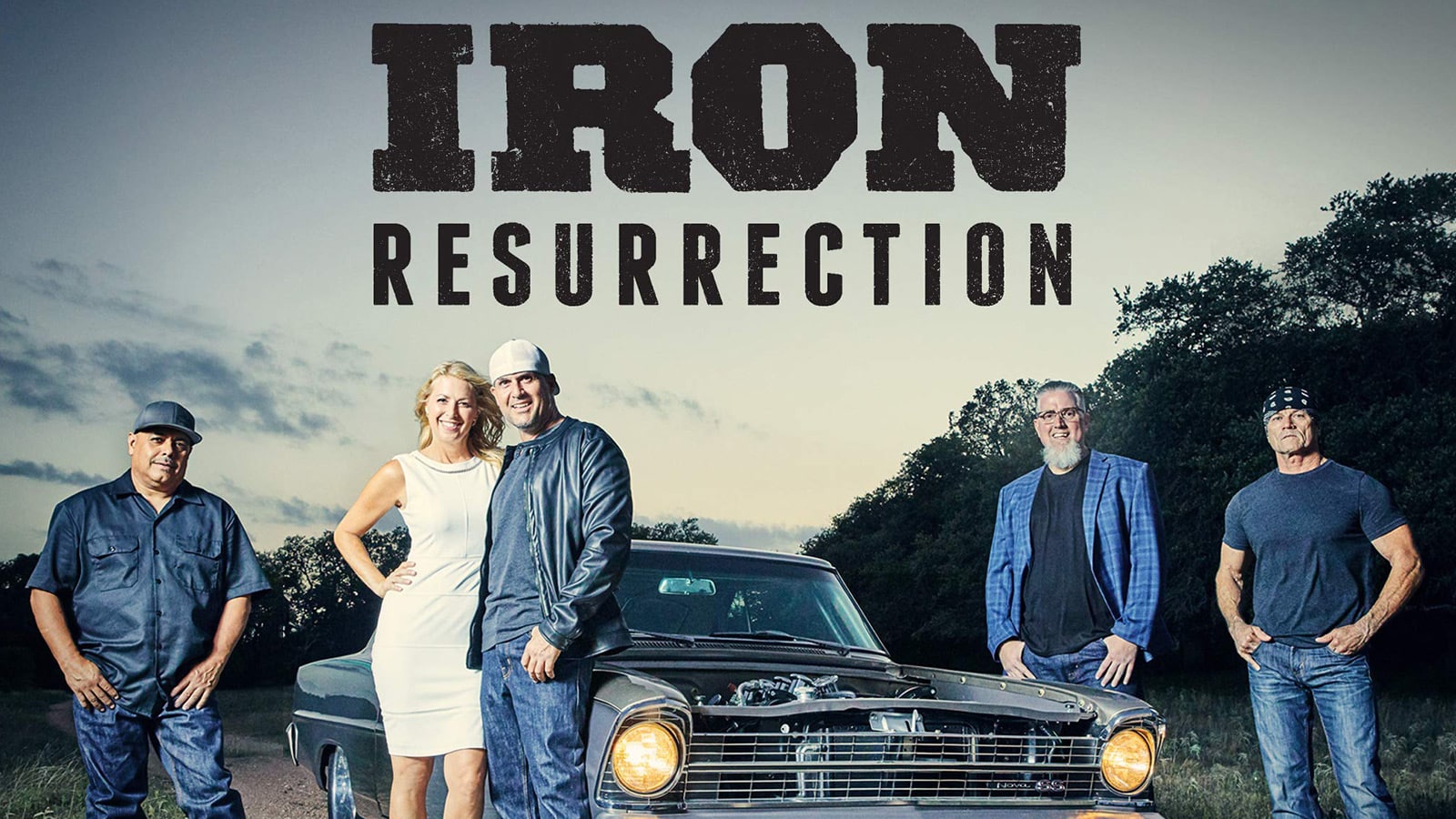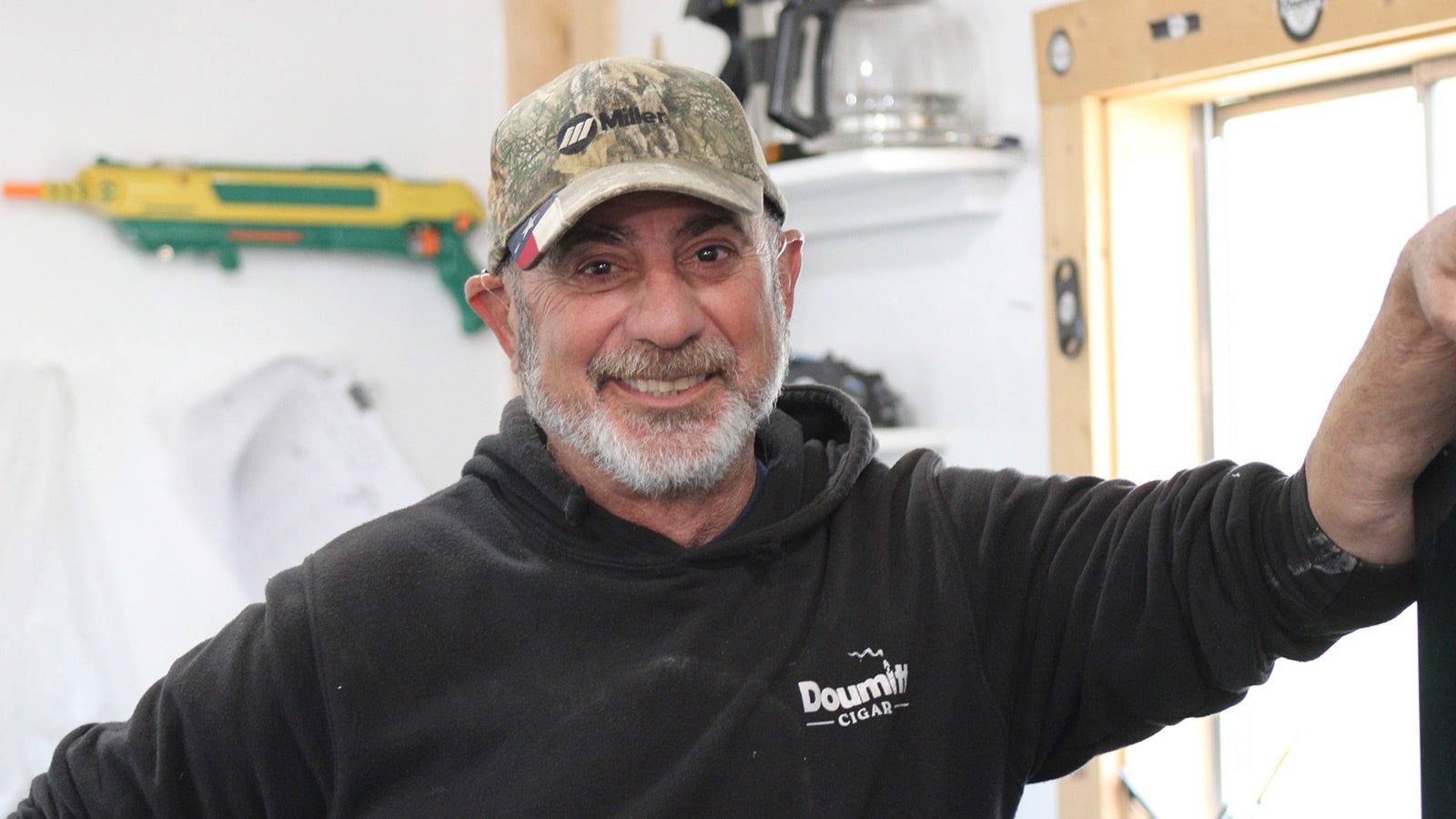Lists
Why Did John Hennessey Want to Punch a “Top Gear” Producer? What happened?

John Hennessey, a name already etched in the annals of the automotive industry, found himself in the eye of a media storm following a contentious encounter with a producer from the popular UK television series “Top Gear.” This incident, which took place in 2014, unfolded during the production of the episode entitled “Rescuing Richard From Lone Wolf Mountain” in the rugged terrains of Canada.
The episode featured Jeremy Clarkson, a legendary and controversial figure in the world of automotive television, behind the wheel of a Hennessey VelociRaptor. The vehicle is essentially a Ford Raptor that had been given a significant performance boost by Hennessey’s own company, Hennessey Performance.
As the creator of the machine in question, Hennessey was naturally involved in the filming process. However, as is the case with numerous “Top Gear” episodes to date, the production was not without its challenges and subsequent high tensions.
Hennessey was instructed from the outset to maintain a distance from the hosts, and was initially informed that he and his team weren’t permitted to ascend the mountain during the filming. This directive created a palpable tension between Hennessey and the producers, and he even contemplated withdrawing his support if any technical issues arose throughout the shoot.
Despite the initial friction, the producers eventually relented and allowed Hennessey and his team to participate more actively in the filming process. The episode was successfully shot without any major hitches, leading fans to believe that, at least this time, everything was fine on the set of “Top Gear.”
However, it was in the weeks following the shoot that a notorious altercation between Jeremy Clarkson and the producer, Oisin Tymon, took place. This incident was by far one of the most defining moments of “Top Gear,” as it permanently changed the series by taking all three of its key personalities out of the equation.
Contents
A new, slower “Top Gear”
The incident, often referred to as ‘steakgate,’ saw Clarkson physically assault Oisin Tymon, over being unable to order sirloin steak at a hotel in North Yorkshire, and led to Tymon needing hospital treatment. The BBC, which aired “Top Gear,” conducted an internal investigation and subsequently decided not to renew Clarkson’s contract, effectively ending his tenure on the show.
Want the skinny on @HennesseyPerf's 600bhp Ford F-150? Your 12-year old self certainly does…http://t.co/8d2WB8moyg pic.twitter.com/pRPKOjwi8U
— Top Gear (@BBC_TopGear) March 1, 2015
The repercussions of this incident were far-reaching, as Jeremy wasn’t only the signature celebrity of the series, but also its creator, alongside Andy William. His departure from the show led to its co-presenters, Richard Hammond and James May, also going out the door.
The trio had been the face of Top Gear for over a decade, and their departure marked the end of a glorious era, during which millions upon millions of car enthusiasts all around the world got hooked on the content made unique through the exhilarating friendship and expertise of Clarkson, Hammond and May.
The show eventually continued with new presenters, but it understandably struggled to replicate the success it had enjoyed under the grand three. Numerous fans felt that there was no longer a point in watching “Top Gear,” since the series virtually didn’t exist without its signature faces.
A faster Clarkson
In spite of what some believed, the incident did not mark the end of Clarkson’s career in television, but in fact provided the means for a new beginning. Amazon, seeing an opportunity, signed Clarkson, Hammond and May for a new motoring show, “The Grand Tour.” The series premiered in November 2016, following a similar format to “Top Gear” but with a larger budget and fewer restrictions. It immediately proved to be yet another one of Jeff Bezos’ commercial successes, attracting millions of viewers worldwide, and receiving positive reviews from critics.
That said, the incident had a significant impact on Clarkson’s public image. Known for his controversial and often divisive opinions, Jeremy was now also associated with physical violence. Despite the negative PR, his popularity did not seem to wane significantly, as many fans followed him from one series to the other, and he continued to be a prominent figure in the world of motoring television.
BBC in the crosshairs of alt-left liberals
The incident also sparked a discussion about workplace behavior, and the treatment of staff in the television industry. The BBC was criticized for its handling of the situation, with some arguing that Clarkson should have been dismissed immediately after the altercation. However, others praised the corporation for conducting a thorough investigation, and ultimately holding Clarkson accountable for his actions.
The vast majority, however, simply wanted to keep watching the “Top Gear” they knew and loved, but BBC had to please the Twitter and Instagram social justice warriors, ultimately opting for what equates to the rating suicide of the series. In a manner of speaking, BBC shot themselves in the foot, and surrendered “Top Gear” to Jeff Bezos.
The reason for the outrage was the fact that Oisin ended up actually requiring medical intervention, as his lip had been cut open by Clarkson’s fists. On top of that, Jeremy called the producer a ‘lazy, Irish c**t,’ which, in spite of not being such, could’ve easily been interpreted as a disparaging remark on the grounds of racial differences, and it immediately was.
Suddenly, in the depths of liberal interwebs, Jeremy Clarkson was a violent, physically abusing racist who, using his position as the creator, and Caucasian origins, gave himself the right to treat someone without any semblance of humanity. This was far from the truth, but the pressure on BBC was too high.
https://www.instagram.com/p/CtpaML4sZgr/
Smacked into court
To top everything off, Tymon decided to take legal action against both Clarkson and the BBC, alleging racial discrimination and personal injury. The lawsuit sought damages believed to be in excess of £100,000 ($140,000). The Central London Employment Tribunal oversaw the proceedings, with both Tymon’s lawyers and the BBC in attendance.
It was eventually settled in February 2016, with Clarkson issuing a public apology to Tymon, thereby expressing remorse for the incident and its aftermath, as well as acknowledging that Oisin was not at fault. The settlement was believed to be for more than the initially sought amount, with both Clarkson and the BBC contributing towards it.
In terms of the audience, the incident and its aftermath led to a shift in viewing habits for many fans of motoring television, notably an uncomfortable one. Those who had enjoyed Clarkson, Hammond and May in “Top Gear,” without any extra costs aside from the television bill, now had to subscribe to Amazon Prime to watch “The Grand Tour.” This marked a significant move in the television industry, with a major show moving from a traditional ’free’ broadcaster to a streaming service.
The conclusion
The skirmish between Clarkson and Tymon was the culmination of long working hours, high stress levels, and a disagreement over a very trivial matter. Jeremy Clarkson is not generally known for being a violent physical abuser, and has never had that intense of an incident before or after Oisin. It’s thus unreasonable to conclude that the creator of “Top Gear” had to be fired by the BBC as someone who they couldn’t work with anymore.
Many fans have also pointed out the fact that Oisin should’ve simply acquiesced to Jeremy’s request, since as the main driver of the series that was providing Oisin his livelihood, Clarkson, after a very long day’s work, deserved whatever he may have liked to eat.
Compared to what the creator and co-host has to do on the set every day of the filming, procuring a slab of meat isn’t even worthy of being called a task. Of course, the media is in the dark about Oisin’s activities that day, and it could well be that some force of nature found itself right between him and a sirloin steak.
Regardless, most people agree that the incident could’ve easily been avoided through a number of means, and that its ultimate outcome is probably the worst thing that could’ve happened to both “Top Gear” and the BBC, while Clarkson and his two best friends will always have a place under most people’s roofs.
Hennessey completely agrees with Clarkson
John fully defended Jeremy in a no-holds-barred interview with Joe Rogan on his podcast “The Joe Rogan Experience,” divulging several key details that shed crucial light on what truly happened behind the closed doors of BBC production.
Rogan, who is also a passionate vehicle collector, was the perfect host for Hennessey, given his love for hand-crafted sports cars and high-performance trucks. His garage boasts numerous desirable examples, such Gunther Werks’ Porsche 911 and Hennessey’s VelociRaptor 600.
The conversation eventually veered towards their past careers, with both sharing anecdotes and experiences from their respective journeys. Hennessey, who started his career modifying and tuning performance cars, talked about his road to becoming the CEO of a company known for its high-performance vehicles.
Rogan, on the other hand, shared his experiences from his diverse career, which spans stand-up comedy, acting, and hosting television shows, in addition to his successful podcast. It was through this sharing of invaluable information that the two eventually touched on what happened that fateful month.
Why he also wanted to punch Oisin
He explained that the producer in question wasn’t only brash with Clarkson, but that his dismissive and agitating behavior has always been a problem, making it only a matter of time before someone would get completely sick of the treatment. In John’s case, it started during the filming of the aforementioned episode, when Oisin came off rather crude and controlling.
First of all, he made sure to tell John not to spend too much time around the stars of the show, implying that his presence was so insignificant it would endanger the ratings of the episode. He was subsequently told that he’d be unable to follow the crew to the mountain, even though they would be driving a vehicle that he produced.
John was understandably annoyed at this point, and told the producer that he was fine with not going, as long as he wouldn’t be bothered about anything that could possibly go wrong with the vehicle. Realizing the risk of the potential predicament, Oisin finally changed his mind and requested that Hennessey accompany them after all.
While most producers would feel fortunate for being able to co-operate with such significant names in the industry, Tymon showed a blatant disregard for John’s grandiosity and boundless expertise, to the point of being brash enough to treat him like a random, unknown individual who would only be a nuisance on the set.
As a result, John told Rogan that he too would’ve punched Tymon had he been in Clarkson’s situation, according to the negative personal history he had accumulated with the producer by that point. Hennessey was clear in stating that to him, Oisin wasn’t a pleasant person to work with, which can greatly exacerbate the stress of a long day’s work.
However, it’s crucial to underscore that no physical confrontation between Hennessey and the producer ever took place, making the only perceptible infraction on John’s part the fact that he said he would’ve punched Oisin too. His admission only served to further bolster the idea that was already rampant on social media, which is that Clarkson didn’t do anything wrong, and that the producer was to blame for everything.
Being a significant departure from Hennessey’s usual dealings, his willingness to physically harm someone sheds light on the pressures and tensions that can arise during the production of a highly acclaimed TV show, especially one like “Top Gear,” which had approximately 360 million concurrent viewers at the time of the incident.
What happened to Oisin?
It would be an understatement to say that Oisin negatively impacted his career by being having been insufferable towards Clarkson, as his time in the limelight since then has produced worse results than not having done a project at all.
Immediately after the scandal, The Guardian reported that Tymon suffered significant backlash on social media, as millions upon millions of Clarkson’s to-the-grave supporters took to their keyboards to bash both BBC and Tymon, outraged at the idea that their favorite series as they knew it was practically ending.
Oisin may have enjoyed a decent sum from the subsequent court proceedings, but some would argue that no amount of money is enough to cover the anguish and embarrassment that his rudeness on the job eventually caused through the reaction of the masses.
After the fiasco had boiled over, Tymon failed to find a place in the entertainment industry for over four years, after which he made the abysmal decision of supporting a project that was doomed from the get-go. Some have theorized that this was the only title he was able to work on, and so it was actually his only choice.
In 2019 Oisin wrote, directed, and was the executive producer for the 10-episode reality TV series entitled “The Great Travel Hack,” which performed abysmally upon release. Neither of its two seasons managed to garner a significant viewership, and its rating on IMDB is only 3.5 out of 10, with only 36 individuals having rated it by mid-2023.
So, while Clarkson is busy earning millions and still shaping the automotive media world, Oisin seems to be kicking the dead horse that his entertainment industry career has turned into through his own fault….and that is how that story went.
Lists
Are “90 Day Fiancé” stars Kalani Faagata and Asuelu Pulaa still together?

Kalani Faagata and Asuelu Pulaa graced the TV screen in the sixth season of “90 Day Fiance” in 2018, thereupon becoming one of the most unique couples ever to have been featured in the series, owing to their peculiar ethnicities and history together. Naturally, the fans took great interest in how their love story was going to play out.
Although they both come from the same culture, Kalani and Asuelu were raised in very different circumstances, which definitely made for some interesting television. It also came with problems, however, as their relationship started running into various bumps along its way throughout the filming.
Five years later, it’s curious to see how things played out for the two, as new adventures and old grudges culminate into a slow crawl that begins to pale in comparison with what they’ve achieved together – two little boys. The question is whether the children are growing up with both their parents at home, or is the custody now shared, and the differences irreconcilable.
Contents
Finding love in paradise
In essence, Kalani and Asuelu are both Samoan, except her family assimilated into US culture decades ago, meaning she can’t even speak the native language. This is easily inferred from Kalani’s name, which means ‘the sky’ in Samoan, while her surname (Faagata) is a mixture of Samoan words for identification (with something), ‘fa’a,’ and strong, ‘gata.’ Asuelu’s name has no specific meaning, but his surname (Pulaa) derives from the Samoan word for rain, ‘pula.’
Faagata was quite possibly exploring her roots at the time when she arrived in Samoa for an exotic vacation, also taking the time to learn about the culture and language of the people of her birth country. Unbeknownst back then, she would also end up finding the man to father her children, and with whom to ascend into stardom.
Asuelu was born in Samoa in 1995, having lived his entire life on the island, working various odd jobs to maintain sustenance for himself and his loved ones. The Pulaa family hails from the not-so-wealthy village of Leone, on the southwestern edge of Samoa’s Tutuila Island, consisting of Asuelu, his sister Tammy, their mother Lesina, and their father who chose to stay anonymous.
Although Tammy is also of working age, most of the financial responsibility fell on Asuelu, whose duty, according to Samoan culture, was to provide for those who raised him. That task proved to be quite difficult in the beginning, with Asuelu struggling on a daily basis to put food on the table. His luck took a turn for the better when he was finally offered employment as an activities director at one of the high-profile Samoan resorts.
This meant that Pulaa was in charge of the various goings-on that serve to culturally enrich the resort goers, as well as entertain them and give them something to plan their day around. He was thus also co-ordinating several groups of performers who had regular shows on the premises, creating daily schedules for their acts.
Kalani ran into Asuelu by accident on a busy day at the resort, and due to her ethnicity creating a recognizable Samoan appearance, he didn’t think she was an actual tourist. Raised in Orange County, California USA, Faagata knew only a few words of Samoan and felt lost at the time. Fortunately, Asuelu was there to assist every step of the way, which at first was definitely overbearing.
Mind under matter
While recounting the time they met, Kalani mentioned the Samoan native spending so much time in her vicinity that she almost believed he was stalking her. Asuelu’s clearly shown eagerness made her queasy about the whole thing at first, but that feeling quickly changed throughout the few times she saw him shirtless.
Their chemistry for one another started to show as Asuelu took it upon himself to introduce the attractive foreigner to her origins, taking the time out of his busy day to show her around. It wasn’t long before they both started believing that their meeting was in no way a coincidence, as each of them turned out to be what the other had been looking for.
The two were already an established couple before it was time for Kalani to return to the US, but there were some things left to do before the next serious step. Faagata was yet to show her true willingness to invest in the relationship, as the religion she was born into had certain rules that prevented her from fully enjoying Pulaa’s company.
Namely, Mormonism’s teachings imply that engaging in any sexual acts before marriage is improper and unclean. This restriction often causes its adherents to stagnate in their relationships until their partners eventually give up on them, as the prospect of marrying someone before even one intimate night is no longer attractive to most of the modern western world.
Their relationship was at first impeded by Kalani’s outdated beliefs, and she refused to do anything with Asuelu that would be frowned upon according to her faith. This impedance put a temporary pause on their relationship, and Faagata went back home for the time being. Back then, it was still a question whether their emotions would remain for one another.
However, the next time Kalani went to Samoa, she had made the decision that no holy book will get in the way of her love life, and the two shared in their long-anticipated night of passion soon upon her arrival. In spite of not yet being married, the two did plan on having children, having tried for one as soon as they got around to being properly intimate.
They became engaged not long after Faagata’s second vacation, at which point Asuelu received the K-1 visa, reserved only for fiancés of US residents, under the condition that they marry within 90 days.
Fortunately for the two, that visa is also the requirement for being featured in TLC’s one-of-a-kind reality TV series “90 Day Fiancé,” whose financial incentive and media coverage proved to be quite welcome to both of the future spouses. They readily agreed to participate in the filming, believing that only pure joy and excitement lay ahead. However, time would prove their prediction far from accurate.
Discovering struggle in the real world
The pink veil of heightened emotions began to drop from Asuelu and Kalani’s eyes as time went by, revealing that there were more differences between them than was initially apparent. For example, Kalani had no obligations towards her family, at least in terms of monetary support. Asuelu, meanwhile, had to follow the unwritten rule of providing for his aging parents and sister, who also contributed, albeit in lesser part.
This lifelong duty that Asuelu seemingly just accepted without so much as a thought began to clash with his responsibilities as a husband and father, as his part-time income had to be split between his US and Samoa families. Kalani herself had to stay at home, making him the only provider for her and the two boys.
As the Pulaas pressed harder and harder for what they believed was their piece of the pie by blood relations, more and more awkward situations began to arise during family meetings, with no love whatsoever for the other side.
#90DayFiance couple Asuelu Pulaa & Kalani Faagata reportedly split; Asuelu reveals he’s single on social media: https://t.co/wrtQgc5ylT pic.twitter.com/TvgaoB3uHP
— The Ashley (@TheAshleysRR) June 14, 2022
Kalani found it ridiculous that Asuelu’s family only ever talked about money, making request after request to her as the accountant of the family. They said they needed cows and other farm animals, as well as various equipment and resources. Faagata didn’t care to even consider most of these pleas, as their costs were too great to fund with just one part-time salary. She had herself and her own children to think about, and that became all the more apparent as time went by.
That said, the claim that his family only needed him for money was a very difficult point to drive home with Asuelu, as he understandably saw those back home in a much more positive light. He also had a strong altruistic side that sought to believe the best in people, so it would take a lot more convincing than that to shift his perspective.
Tight bonds
Nowhere is Asuelu’s unwavering nostalgia and family loyalty more apparent than in one of the strangest dates ever to have occurred in the series, deemed controversial not for what was said or done, but where.
Pulaa was informed by his wife that they simply weren’t spending enough time together, what with two kids running around and him being out of home for work throughout most of the day. She was understandably feeling alone in the marriage, spending all of her time taking care of two little boys.
Aside from being a mother, Kalani was still a young and energetic woman who wanted new experiences, missing the life she used to have at the time when they first met, with exotic vacations and free time for partying, shopping, and simply just hanging out.
Asuelu decided to make it up to Kalani by sending the children to her parents for the night, during which time they would embark on another romantic adventure, s they used to before the many obligations became their day-to-day.
He promised her a romantic date and apologized for not giving her more time, which made Faagata very excited, especially when she received a fresh bouquet and a box of fine chocolates. She asked where they were going, but Asuelu felt it better to keep her in suspense the whole way there.
To put it mildly, the unsuspecting wife found his axe throwing date an unremarkable idea for a husband-and-wife activity. That said, she did still appreciate the fact that he acknowledged her needs and at least made an attempt to alleviate her feeling of loneliness and neglect in the marriage.
Kalani made it known that she valued his effort, but that the place could’ve been far more appropriate for its purpose. To her surprise, right after having heard at least some form of approval for what he did, Asuelu took the opportunity to ask her a big favor – going back to Samoa for a while, and spending a considerable amount of money doing so.
Facing the truth
It wasn’t until Asuelu’s mother abruptly left the table during a family dinner that he began to realize his wallet might be the only value he holds in the eyes of those back home. This was preceded by a brief back and forth, during which Lesina and Tammy insisted that he must send funds to Samoa regardless of his other obligations.
Lesina was adamant that Kalani’s wealthy parents could afford all of the children’s expenses and keep the family afloat in the US, but that there was no one taking care of the Samoan side. Tammy reinforced her point by stating that Asuelu had no excuse for avoiding his responsibilities as a son.
Faagata then asked Tammy whether she sent any money herself, and the sister avoided the question altogether, replying that it wasn’t any of her business. Asuelu was torn between his flesh and blood on one side, and the same on the other. He was understandably crippled in making a choice, and stuck to primarily providing for his sons.
It became apparent at the end of the ordeal that Asuelu was beginning to see the way his Samoan family truly thought of him, and from that moment on, he was going to dedicate himself to Kalani and the sons fully. However, the dissatisfaction of not having his family’s support wasn’t going to stay buried, and it began to seep into the marriage.
He became increasingly more disappointed and grouchier over the following months, finding flaws in almost anything related to Kalani. Her mother didn’t appreciate this attitude at all, bringing them to odds soon thereafter. Having the relationship soured with both sides, Asuelu ultimately began living on his own more and more, leaving the fans uncertain of the family’s fate after their presence in the series ended.
Old grudges, new beginnings
The question of whether Asuelu and Kalani are still married can’t be answered straightforwardly as of mid-2023, since neither of the two made an effort to clarify their current marital status, while at the same time also keeping any family drama out of the public eye. The many fans’ pleas for clarification have also gone unanswered by both parties, which is predicted to remain the norm.
https://www.instagram.com/p/Cp1U0MarcDV/
That said, there are ways of forming at least a plausible assumption about what might’ve occurred in the famous marriage, as the clues are strewn all over the young parents’ social media. For example, Asuelu’s Instagram page lends great credence to the idea that he hasn’t been spending any time with Kalani, but lots of it with his sons.
Seeing as little Oliver and Kennedy also live with their mother, as evidenced by her vlog from 18 April 2023, it’s reasonable to assume that the two must often make contact with each other for the sake of accessing the children. This means that, in spite of consistently staying in touch, Kalani and Asuelu don’t post each other on their social media whatsoever, which implies that they might’ve amicably parted ways.
Lists
What happened to Juliana Custodio after divorcing Michael?

Juliana Custodio finally got her big break from the poverty of her home country by finding a way to marry into wealth in late 2019, at which point she was also featured in TLC’s hit reality TV series entitled “90 Day Fiancé.” Looking at the vast difference in pretty much every aspect of what makes a human being between her and Michael Jessen, the supposed love of her life, claims that her feelings for him are genuine can be seen as no better than suspiciously dubious.
Lo and behold, their marriage didn’t even last two full years before Juliana broke it up, and went off to marry a younger man whose lifestyle coincided much more closely with her own. Juliana’s course of action is seen by many as the gold digger guidebook, since very few among the audience ever believed that she actually loved Michael.
With that also came the interest in how she fared after the marriage and away from the spotlight, as her future partners are very likely to have seen the series or at least heard of it, meaning they’d be well aware of Juliana’s true intentions, and thus less likely to fall prey to her supposed charm.
So, the question really is, did the world become harder for Custodio to live in following her split from the only man who truly trusted her? In order to glimpse the real answer, it’s necessary to encompass numerous facts about Juliana’s character that have come out over the course of her presence in the show.
Contents
A life-changing fiesta
Juliana grew up in a not-so-prominent neighbourhood of Goiânia, which is the capital of the Brazilian state of Goiás. Living in a country whose four percent of GDP is only spent on remedying road accidents that cause approximately 23 deaths across 100,000 people per year is most likely not a very positive experience.
This is aside from the fact that she was born there in 1996, meaning that the drug wars of the ‘90s were also in full swing at a time when her parents were trying to raise a baby. Criminal success brought about fascination with crime among the younger generations, which consequently led to a much lower interest in academic pursuits.
As a result of numerous negative factors, Brazil remains a destabilized crime capital even in mid-2023, with femicide and gang violence still being some of the worst issues that the country’s civilians have to deal with on a daily basis. Juliana, like many other young Brazilian women, was understandably sick of that life, and determined to seek her fortune elsewhere.
It’s small wonder, then, that Brazil is known for its prevalence of plastic surgery among younger individuals, with aesthetic medical procedures being the main gift of a young teenager’s parents for their 16th birthday, instead of a vehicle as often in the US. Juliana and many other Brazilian youths attempt to use this beauty to find a future elsewhere, doing everything they can to raise their chances.
Such was the case with Custodio as well, who frequented fun events as far away abroad as possible, usually in the company of someone wealthy enough to afford her the pleasure, most commonly found on dating apps such as Tinder, Hinge and Bumble.
Juliana couldn’t have imagined the opportunity that waited for her during a regular party trip to Croatia, coming across the man who would pretty much gift her permanent rights to stay in the US. Michael himself was probably overjoyed at still being able to seduce a young and healthy woman, considering that his age at the time (42) was almost double that of Juliana (23).
As for the young Brazilian, her eyes glimmered at the sight of a wealthy businessman who has no current wife, and all the time in the world to give to the right woman – there was nothing more she could’ve asked for. This instantly made him the most attractive man on the planet to Custodio, and she had to do something about that.
The details of their first encounter are scarce, but fans have theorized that she may have given Michael a night so memorable that he couldn’t take his mind off her all throughout the following months. Ultimately, the middle-aged businessman and the wannabe rich wife both had exactly what they were looking for, so it was time for the next logical step.
Overcoming distance
After supposedly falling in love, and returning to their respective homes from wild nights in Croatia, Juliana and Michael only had one problem in their relationship. To be exact, they had 4280 problems, or miles (6888kms), standing between Greenwich, Connecticut USA, and Goiânia, Brazil.
Online messaging just wasn’t enough, and they were both sure of what needed to happen next. Juliana was determined to somehow incorporate herself into the idyllic life of her new beau, applying for a tourist visa at the US embassy. This decision turned out to be more than either of them had bargained for, prompting them to seek a different solution altogether.
The application process for a US tourist visa is deemed quick and easy for Brazilian citizens, in the event that all the necessary documents and information are accurately provided. Applicants are required to fill out the DS-160 form, obtain a Labor Condition Application (LCA) from the US Department of Labor, and attend a visa interview. These steps ensure that applying individuals meet the criteria and requirements set forth by US legislative bodies.
On top of that, the wait times before the process is simply put into motion can be quite lengthy, depending on the applicant queue, the political situation, economic fluctuations, and various other factors. If no additional wait time is incurred by the aforementioned, there’s also the limitation of workload and staffing at the embassy or consulate which the applicant has contacted.
The tourist visa was ultimately too difficult for Juliana to obtain, although details about the endeavour have never been clarified. She perhaps didn’t pass the interview, didn’t have all the appropriate documentation, or simply was simply impatient, and thus cancelled it altogether. Whatever may have happened, she made sure to inform Michael that there would have to be another way for her to earn the right to visit the US.
Miraculously, Jessen then thought of what is undoubtedly the most beneficial possible deal for Custodio, at his own subsequent expense. There are no limitations for the type of person a US citizen can become engaged to, after which their fiancé is practically gifted the K-1 visa, obtaining the right to stay in the country for 90 days under the condition of marrying the applying citizen within that period, or returning to their home country.
Michael probably gave this a thought or two, somehow ultimately arriving at the conclusion that Juliana feels the same way about him, in spite of the fact that he’s old enough to be her father. He then displayed the ultimate sign of trust and actually went through the simple procedure of providing the paperwork and funds to obtaining his wife-to-be’s K-1 visa.
This is also when her life would reach even greater heights, as the producers of TLC’s “90 Day Fiancé” caught wind of Jessen’s bold decision, inviting them to front the cameras so that the whole world can witness what was undoubtedly going to happen in the long run, as soon as Custodio got exactly what she needed out of the transactional union.
#90DayFiance Michael Jessen's house goes into foreclosure and his wife Juliana addresses break up rumors while traveling around Europe. https://t.co/4iBj1beZ2d pic.twitter.com/rE2qmnH3cj
— Starcasm (@starcasm) September 26, 2021
Nearly giving up on love
In the video uploaded by TLC Southeast Asia, entitled “90 Day Fiance Season 7: Michael and Juliana,” the businessman reveals crucial details about their struggles early on. The process of waiting for the K-1 visa was apparently so lengthy that the two almost completely scrapped the US plan, at which point Michael was to fully relocate his life to Brazil.
However, as it would later turn out, Juliana never really wanted to stay in her home country, so this course of action was out of the question. As fans pointed out over the years, in order for her to want to stay in Brazil with Michael, she would’ve had to actually love him. So, instead, the two waited as long as it took for the visa to be approved, eventually landing Custodio on US soil, where she now plans to remain for the rest of her life.
She was extremely lucky for that to happen as well, since there was almost nothing stopping Michael from moving over. He’s a self-proclaimed wine entrepreneur, and while the details of how he actually earns money have remained shady, it’s generally believed that he derives an excellent income from being the middleman in various lucrative wine deals.
Being in that line of work, Michael isn’t really obligated to a persistent physical presence at a specific location, and he could simply fly in from Brazil to land the deals that fuelled his teenage boyish dream of a life. However, he did mention having two big commitments back in the US, which would be his son Max and daughter Cece, from his marriage with Sarah Jessen.
Although the two were divorced, they remained in constant contact and on relatively amicable terms, having decided to do what’s best for their children instead. Besides, they’d been married for over a decade, and had had virtually no major fights. The main reason for their separation was Michael needing to fully live out of his suitcase at times, and not feel guilty for fully sampling all of the exotic delicacies at any given party.
Trouble in paradise
Much like her husband, Juliana also had a voracious appetite for the finer things in life, but unlike Michael, she wasn’t a prominent wine entrepreneur. This meant that the funds for her lavish choices had to come from Jessen’s pocket instead, which wasn’t agreed upon prior to every single purchase she made.
There were, indeed, times when Custodio would behave like a classic rich wife and just buy things on a whim, with money that she couldn’t even conceive earning. She didn’t have to, however, since Michael was such a loving almost-father to her. Still, there were limits to what she could get without turning her husband’s head, and a new expensive car was exactly that.
TLC UK’s video “Michael Finds Out His Fiancé Bought Herself A Car Using His Money | 90 Day Fiancé” showed exactly what had happened at the time, putting emphasis on just how brash Juliana had become since her marital arrangement had afforded her a life of peak comfort and luxury.
In spite of what is logical to believe, Custodio started living as if she was his wife even before arriving to the US. The purchase of a car whose specifics have never been released happened while she was still in Brazil and waiting on the K-1 visa to be processed. Michael had unfortunately given her his credit card before she even moved in – another sign of good will on his part.
She abused this trust, however, and he has since then been a lot more careful about giving her unsupervised access to his money. In the words of Jessen himself, ‘Why the f**k would you buy an automobile within weeks of when you’re coming to America?’ Juliana’s somewhat dubious explanation is that she was unsure whether the K-1 visa would work out, and thus wanted at least something solid to rely on if she were to stay in Brazil.
Of course, she didn’t bring the car along with her, probably planning for the hubby to buy her another one. Different continent – different vehicle, or at least that made sense in her mind at the time. Jessen wasn’t extremely naïve, however, and her spending sprees became a lot more controlled after she had arrived.
It’s no mystery that these terms of arrangement were nowhere near satisfactory for the luxury-hungry Brazilian, who was never able to afford even a shred of Michael’s living comfort. As a result, she found it appropriate to proclaim their marriage a doomed affair during the COVID-19 lockdown in October 2021.
A brand-new wallet
It didn’t take long for Juliana to capitalize on the fame that the series afforded her, and exploit her beauty for various fashion magazines, becoming a model in prominent agencies across several countries, including the UK, Brazil, Denmark and Italy as well as the US. Her newfound popularity also made finding another rich husband a simple task, and thus she eventually landed herself a younger Michael.
https://www.instagram.com/p/CpIgmYarJF8/
German art collector Ben Obscura soon became Juliana’s fiancé, and they weren’t tardy with family expansion either, as she gave birth to Benjamin James Louis Custodio on 19 July 2022. As of mid-2023, she continues to pose for numerous photoshoots all around the world, citing 85 countries on her Instagram page.
While many fans believe that Juliana has Michael’s naiveté to thank for all of her subsequent success, it remains clear that she did rather well for herself in the long run, as the life she always sought to have is now prominently displayed all over her social media.
Lists
How rich are the ‘Port Protection: Alaska’ cast? How much do they earn per episode?

About “Port Protection: Alaska”
The popular National Geographic series premiered in July 2015, and followsg the lives of the locals of the far-flung Alaskan community, who get by without law enforcement or government assistance, the show taking a fascinating look at how the hardy residents of Port Protection fend for themselves, and defy the odds in the face of what many consider permanent adversity.
Main cast members include Mary Miller, Stuart Andrews, David Squibb, Gary Muehlberger, Hans and Timbi Porter, Litzi Botello, Timothy Leach, and Amanda Makar. Gary, one of the stars of the show, tragically died in March 2021 after living in Alaska for almost four decades. An asset to the community thanks to his fishing and trapping skills, his death rocked Port Protection, and came as a blow to fans of the series. The survival expert died in a house fire; his pet dog, Trapper, also passed a few months later.
Mere months after Gary’s untimely demise, Litzi Botello’s husband John Dean, announced that the TV star had passed away after a six-month battle with cancer. Although he failed to clarify whether Litzi was undergoing chemotherapy at the time of her passing, John shared that she passed away peacefully at home.
Last but not least, Sam Carlson, the commercial fisherman and trapper who has lived in Port Protection all his life, suffered a heart attack in December 2022, which led to an outpouring of support from his online fanbase. The news broke in the official Port Protection Facebook group, and sparked health concerns regarding Sam, who is in his early 60s. Thankfully, the TV personality has since recovered.
Net Worths
A common question amongst “Port Protection” fans – and those of other reality TV series – is just how much their favorite TV stars earn per episode. Various online sources claim that the cast members earn $4,500 per episode, but there’s no substantial evidence to prove the figures; in fact many participants in reality TV series prefer to remain silent, except those who believe that they’re being underpaid! Assuming that they do earn that much, the members of the Alaskan community must have amassed a decent sum of money over the last eight years, although none of them live above their means or spend frivolously.
Port Protection itself has a tiny population of just 36 full-time residents as of 2023. With a total area of just four square miles, the CDP (census-designated place) is truly tiny but has become something of a niche tourist hotspot. With a normal median household income of around $10,000, over half of Port Protection’s population is living below the notional poverty line; however, wealth is relative in a place where residents grow their own crops, hunt and fish for their own food, and build their own shelter.
The stars of the National Geographic show are believed to be worth about six figures: in fact, one article sensationally states that Sam Carlson is worth $500,000, however, there’s good reason to believe that this is an exaggerated amount. The self-taught inventor, affectionally nicknamed The Engineer, has appeared in 38 episodes of the show since 2022; even if he were to have earned the reported $4,500 per episode, that would amount to $171,000, so we think that Sam Carlson’s net worth is actually in the $100,000 range.
It’s important to note that, unlike other reality TV personalities, the cast of “Port Protection” aren’t interested in becoming a brand or a product. For example, Fellow Port Protection resident Curly Leach doesn’t even believe in money, which makes it almost impossible to calculate his net worth. In the Alaskan community, his main responsibilities are fishing and collecting firewood; rather than paying or being paid for goods or services, Curly trades what he has to get everything he needs.
Despite being a recognizable face to millions of viewers, Curly is such an elusive ‘public’ figure that fans don’t even know how old he is. The only information journalists have been able to obtain is that the hardy outdoorsman registered as a Republican voter in 1996. As a hunter and lumberjack, we can assume that Curly is worth about $50,000; however, it remains unclear what he does with the money he earns from appearing in “Port Protection”.
#PortProtection’s Amanda Makar is an inspiration to us all. pic.twitter.com/zGZkx4OuwJ
— Girls Library ღ (@GirlsLibrary) May 24, 2016
Amanda Makar left the show at the end of season two, with fans missing her presence ever since. A spokesperson for National Geographic stated that many residents moved away from Alaska when the show was halted; however, they were just as soon replaced by fresh faces who were eager to try their luck in the tiny community. Amanda is just one of several cast members who left, and hasn’t been mentioned since.
In happier times, Timbi and Hans Porter were one of the few married couples to reside in Port Protection. During their time in the show, Timbi and Hans were often seen worrying about how to provide for their daughter, Marjorie, who was born with a disability. A few salacious online sources claim that the couple died in a boat accident; however, the truth is that they separated in 2019, and have since gone their separate ways, with Timbi living in the Anchorage area.
It remains unclear why they divorced, but some fans speculate that the stress of caring for Marjorie and living isolated from the world took its toll on Timbi. Online websites calculate that the couple’s joint net worth as being in the $100,000 range when they were together.
Last but certainly not least is Mary Miller, another Port Protection transplant who grew up in Oakland, California. From hunting and fetching firewood alone, to shrimp potting during the harsh winter months and using her carpentry skills to better preserve meat, Mary proved herself more than capable of being self-sufficient. The brunette became one of the show’s most likeable characters due to her willingness to help others, such as when she taught Amanda how to shoot.
Sadly, Mary also left the show for unspecified reasons. The Oakland native moved to Port Protection to get away from the hustle and bustle of urban life, and stayed in the tight-knit Alaskan community because of the freedom she felt, living life on her terms. Mary, who is estimated to be worth around $50,000, presumably backed out of the show because she either moved away from Port Protection, or didn’t reach an agreement when it was time to renew her contract.
Season eight of “Port Protection” aired in early 2023. National Geographic has yet to announce an official release date for a ninth season, if there is one.
-

 Instagram Stars3 months ago
Instagram Stars3 months agoKatelyn Runck – Measurements, Height, Age. Plastic Surgery?
-

 Twitch Stars1 month ago
Twitch Stars1 month agoThe Sphere Hunter’s Biography: Trans? Age, Face, Real Name
-

 Actors6 months ago
Actors6 months agoWho is Dylan Llewellyn? Age, Height, Gay? – Biography
-
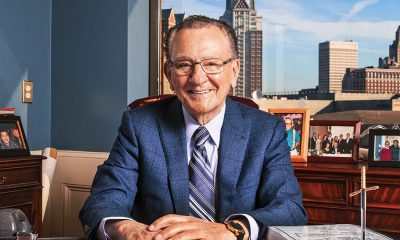
 Youtube Stars3 months ago
Youtube Stars3 months agoHow Rich is Judge Frank Caprio? Net Worth, Salary, Family, Bio
-

 Instagram Stars4 weeks ago
Instagram Stars4 weeks agoThe naked truth of Claire Abbott’s disappearance: Where is she now?
-
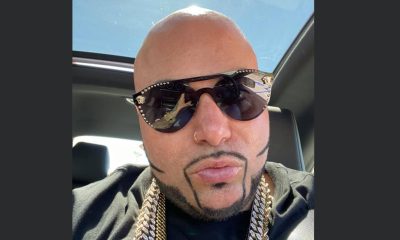
 Web Stars6 months ago
Web Stars6 months agoWho actually is Hard Rock Nick? Net Worth, Real Name – Wiki
-

 Businesspersons4 weeks ago
Businesspersons4 weeks agoThe Untold Truth Of Brandi Love’s Husband – Chris Potoski
-
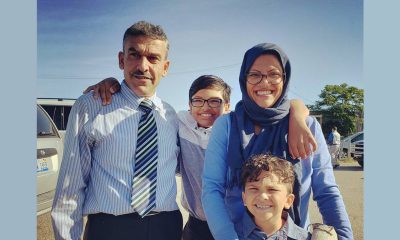
 Celebrity Spouses2 months ago
Celebrity Spouses2 months agoThe Untold Truth Of Rashida Tlaib’s Husband – Fayez Tlaib




























